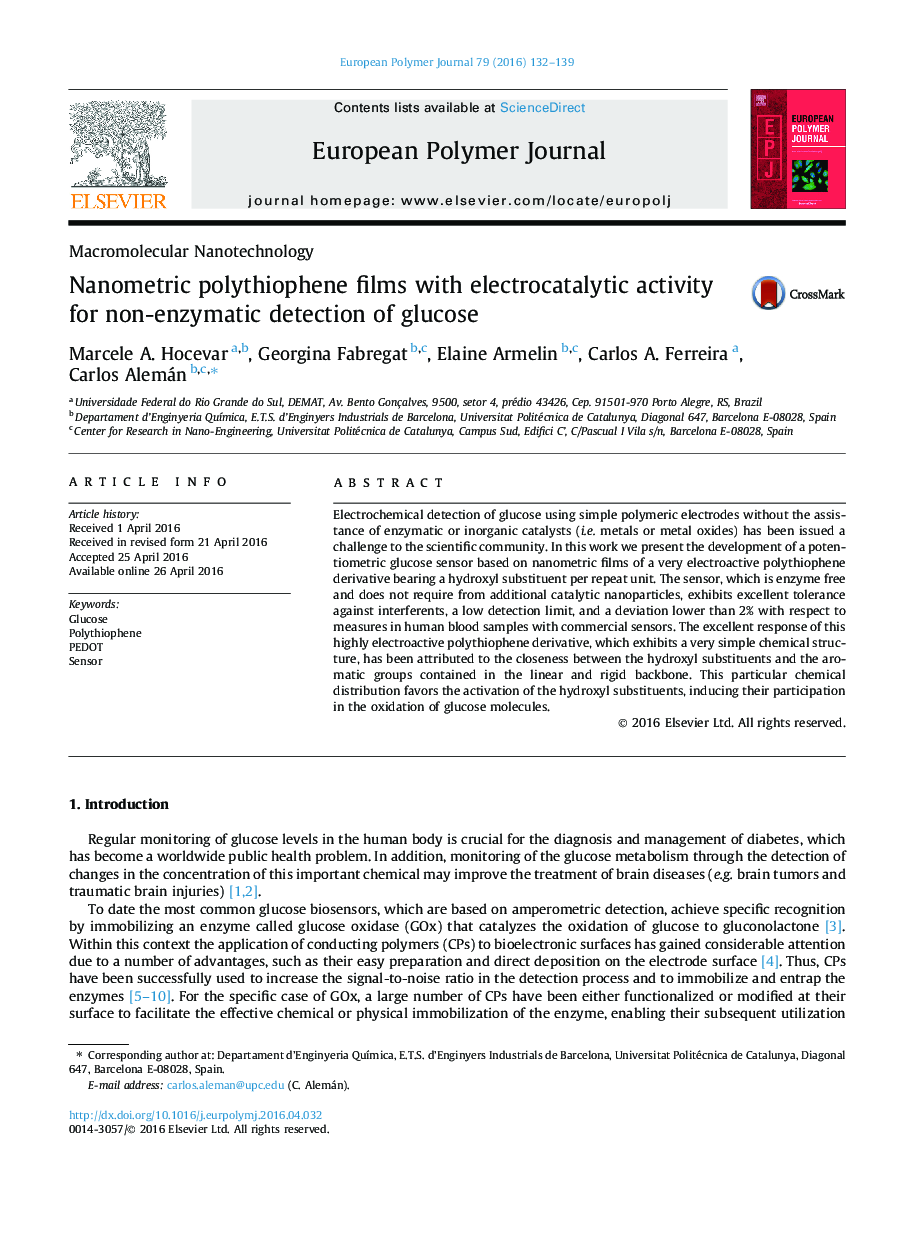| Article ID | Journal | Published Year | Pages | File Type |
|---|---|---|---|---|
| 1401323 | European Polymer Journal | 2016 | 8 Pages |
•Detection of glucose has been achieved with polythiophene alone.•Enzymatic and inorganic catalysts have been replaced by hydroxyl substituents.•Poly(hydroxymethyl-3,4-ethylendioxythiophene) shows electrocatalytic effects.•Polythiophene and commercial sensors show the same sensibility and selectivity.
Electrochemical detection of glucose using simple polymeric electrodes without the assistance of enzymatic or inorganic catalysts (i.e. metals or metal oxides) has been issued a challenge to the scientific community. In this work we present the development of a potentiometric glucose sensor based on nanometric films of a very electroactive polythiophene derivative bearing a hydroxyl substituent per repeat unit. The sensor, which is enzyme free and does not require from additional catalytic nanoparticles, exhibits excellent tolerance against interferents, a low detection limit, and a deviation lower than 2% with respect to measures in human blood samples with commercial sensors. The excellent response of this highly electroactive polythiophene derivative, which exhibits a very simple chemical structure, has been attributed to the closeness between the hydroxyl substituents and the aromatic groups contained in the linear and rigid backbone. This particular chemical distribution favors the activation of the hydroxyl substituents, inducing their participation in the oxidation of glucose molecules.
Graphical abstractFigure optionsDownload full-size imageDownload as PowerPoint slide
